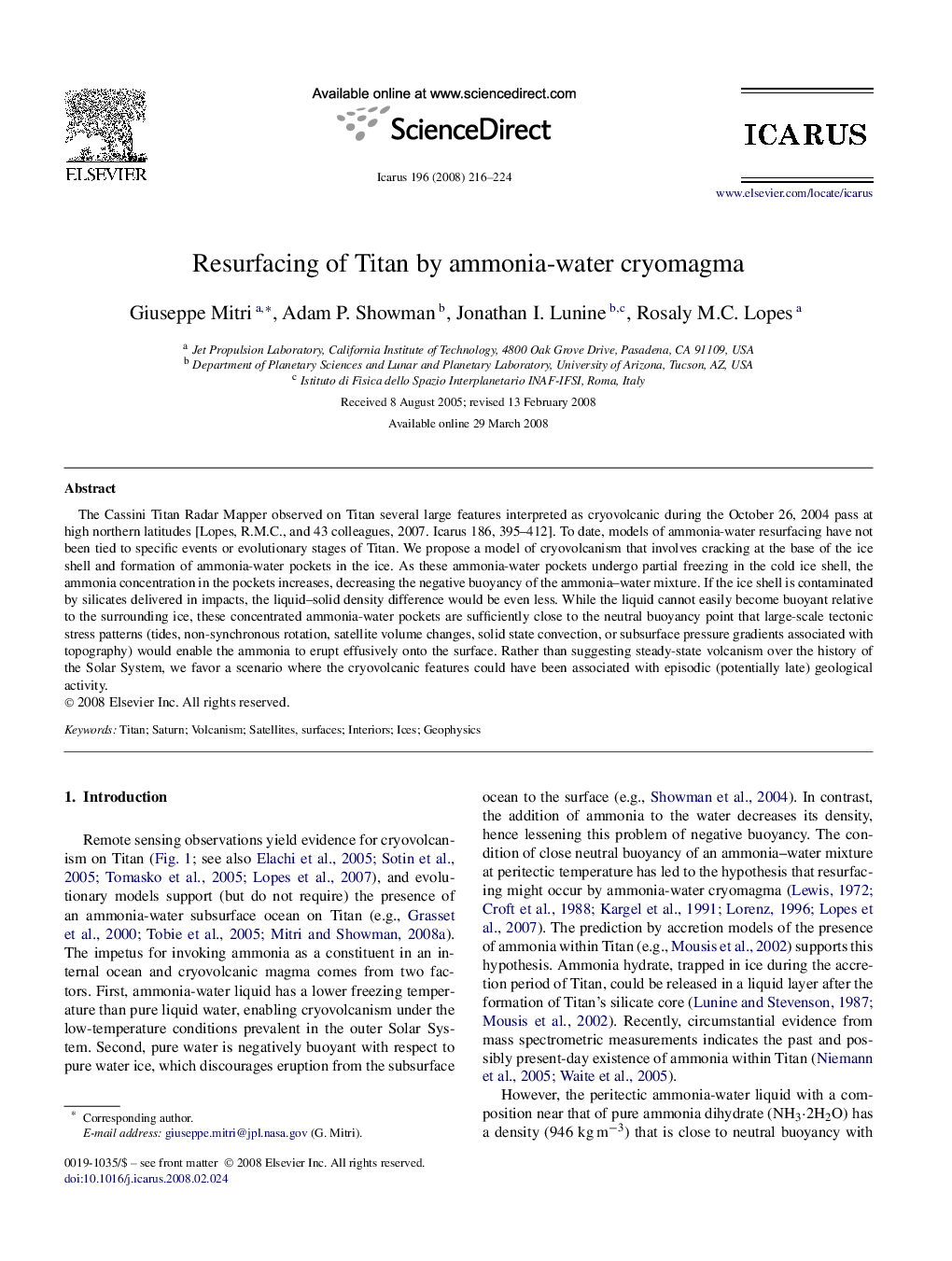| Article ID | Journal | Published Year | Pages | File Type |
|---|---|---|---|---|
| 1775141 | Icarus | 2008 | 9 Pages |
The Cassini Titan Radar Mapper observed on Titan several large features interpreted as cryovolcanic during the October 26, 2004 pass at high northern latitudes [Lopes, R.M.C., and 43 colleagues, 2007. Icarus 186, 395–412]. To date, models of ammonia-water resurfacing have not been tied to specific events or evolutionary stages of Titan. We propose a model of cryovolcanism that involves cracking at the base of the ice shell and formation of ammonia-water pockets in the ice. As these ammonia-water pockets undergo partial freezing in the cold ice shell, the ammonia concentration in the pockets increases, decreasing the negative buoyancy of the ammonia–water mixture. If the ice shell is contaminated by silicates delivered in impacts, the liquid–solid density difference would be even less. While the liquid cannot easily become buoyant relative to the surrounding ice, these concentrated ammonia-water pockets are sufficiently close to the neutral buoyancy point that large-scale tectonic stress patterns (tides, non-synchronous rotation, satellite volume changes, solid state convection, or subsurface pressure gradients associated with topography) would enable the ammonia to erupt effusively onto the surface. Rather than suggesting steady-state volcanism over the history of the Solar System, we favor a scenario where the cryovolcanic features could have been associated with episodic (potentially late) geological activity.
